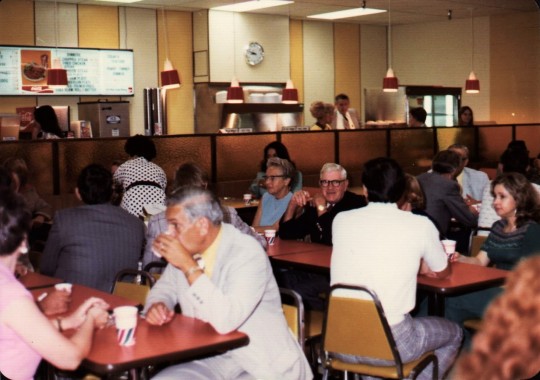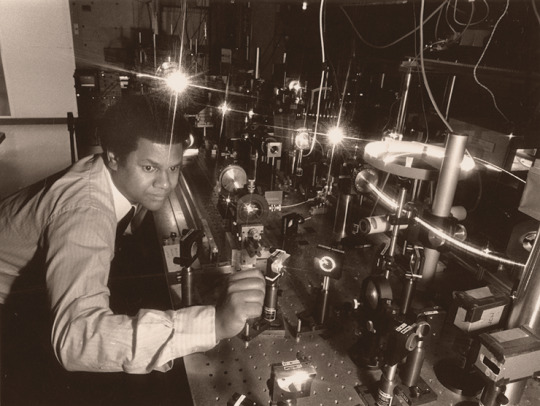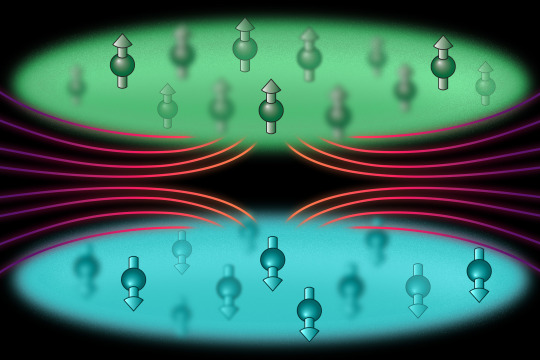#electronics department
Note
more sophie i command you


Sophie: Oh…um…

Sophie: …Hi…?
#the graveyard shift#the graveyard shift au#answering asks#sophie walten#the walten files#season 2#episode 6.5#loading in lore…#electronics department
130 notes
·
View notes
Text
Computer control system & Robotics (66871)
অতি সংক্ষিপ্ত প্রশ্ন:
১।রিয়েল টাইম কন্ট্রোল সিস্টেম বলতে কি বুঝায়?
২।মোশোন কন্ট্রোল কি?
৩। লেডার ডায়াগ্রাম কি?
৪।ON line control system এর দুটি সুবিধা লেখ?
৫।Robotics কি?
৬। অ্যাডাপটিভ কন্ট্রোলার কাকে বলে?
৭।Fuzzy সেট বলতে কি বুঝায়?
৮।ফুজি লজিক কি?
৯।ল্যাডার Diagram কাকে বলে?
১০।Real time control কি?
১১।রোবট প্রোগ্রামিং Mode কত প্রকার ও কি কি?
১২।CAM কি?
১৩।রোবট ম্যানু পুলেটর কাকে…

View On WordPress
0 notes
Photo










Kmart (1975)
#kmart#vintage department stores#70s stores#70s fashion#70s aesthetic#vintage electronics#70s decor#vintage tvs#retail stores#1970s#seventies#1975
4K notes
·
View notes
Text

Lace experiment done on net that turned out too lopsided for the pattern I intended to use it for- don’t love the pattern itself (looked better when I was drawing it sjsjsj) but I do like the effect
EDIT: forgot to mention this is a visual pun- it’s a butterfly net :)
#id in alt#anyways with this we depart completely from the realm of passable technical skill bye bye nice knowing you#I like the lines reminds me of a couple of my older electronics screens which is FANTASTIC news for me :)#makes me happy and also opens up some potential future projects#anyways I gotta go do my exaaammmmmmmmsmsmnsjdbdhfhfh#lacemaking#fiber arts#embroidery#netting#netted lace#filet lace#my work#trypophobia
15 notes
·
View notes
Photo

Anthony M. Johnson conducting experiments on the optical properties of glass fibers, Quantum Physics and Electronics Research Department, AT&T Bell Laboratories, Holmdel, New Jersey, c. 1980s.
#science#physics#optics#Anthony M. Johnson#Quantum Physics and Electronics Research Department#AT&T Bell Laboratories#Bell Labs#Holmdel#New Jersey#USA#1980s
128 notes
·
View notes
Text
After Ohio rail disaster, Buttigieg is silent on restoring the safety standards Trump repealed

When a freight train carrying toxic chemicals derailed near East Palestine, Ohio, bursting into flame and sending up clouds of poisonous vinyl chloride smoke and gas, our immediate concerns were for the people in harm’s way and the train crew:
https://www.nytimes.com/2023/02/04/us/train-derailment-fire-palestine-ohio.html
If you’d like an essay-formatted version of this post to read or share, here’s a link to it on pluralistic.net, my surveillance-free, ad-free, tracker-free blog:
https://pluralistic.net/2023/02/11/dinah-wont-you-blow/#ecp
But those immediate concerns were soon joined by a broader set of worries: that the entire rail industry presented a systematic danger, and the Ohio derailment was a symptom of a much deeper pathology that endangered anyone who lives near one of the rail corridors that crisscross America.
The rail industry is the poster child for corporate power, and rail barons were among the first targets of Gilded Age trustbusters who saw the rail monopolies as a threat to the prosperity and wellbeing of Americans, as well as the integrity of the American political system itself.
40 years of neoliberal “consumer welfare” antitrust — starting with Reagan and continuing through every administration since — has seen the American rail sector achieve levels of concentration that meet and exceed the corrupt, untenable degree of the late 19th century.
Like the original rail barons, the current crop (including the self-styled cuddly billionaire Warren Buffett), have gutted rail investment, skirted on safety, maimed and abused their workforce, smashed their unions, and placed the entire US supply chain in a state of brittle precarity:
https://pluralistic.net/2022/02/04/up-your-nose/#rail-barons
Like all monopolists, the rail industry has been able to capture its regulators, trampling evidence-based policy and replacing it with rules that benefit shareholders at the expense of the public, labor, and customers.
https://doctorow.medium.com/regulatory-capture-59b2013e2526
This regulatory capture is an inevitable consequence of market concentration. When an industry is composed of dozens of small- and medium-sized firms, they are unable to converge on a single story about which rules regulators should favor them with: some of those companies will want things the others don’t, and each will vie to produce evidence disconfirming the others’ claims.
But when an industry dwindles to a handful of cozy giants whose C-suites are stuffed with company-hopping executives who’ve done time at every major company in the sector, they converge on a single fairy tale about the best way to regulate their industry, and convert their regulators’ truth-seeking exercises into rigged auctions that they handily win:
https://locusmag.com/2022/03/cory-doctorow-vertically-challenged/
That’s what happened during the Trump years, when rail lobbyists secured the repeal of a long-overdue, hard-won safety regulation that would have required rail companies to replace the Civil-War-era brakes on their rolling stock with modern electronically controlled pneumatic brakes (ECPs):
https://jacobin.com/2023/02/rail-companies-safety-rules-ohio-derailment-brake-sytems-regulations
The repeal cost millions in lobbying dollars, but it was worth it. Shortly after the ECP rule was scrapped, Norfolk Southern handed millions in bonuses to its execs and did billions in stock buybacks, while laying offf thousands of workers:
https://www.fool.com/investing/2018/10/25/norfolk-southern-implements-massive-buyback-progra.aspx
Elections, we’re told, have consequences. After Biden won the 2020 presidential election, he made a string of excellent appointments — people like FTC chair Lina Khan, who hit the ground running with detailed plans for making sweeping, consequential changes that would blunt corporate power, reverse-Trump era abuses, and correct the dysfunctions that created a political base for Trump:
https://www.eff.org/deeplinks/2021/08/party-its-1979-og-antitrust-back-baby
But other Biden appointees arrive in office with much less ambition. Transportation Secretary Pete Buttigieg has spent his tenure as King Log, failing to take action on spiraling airline cancellations, confining his major enforcement action to fining foreign airlines while ignoring the out-of-control abuses of America’s domestic carriers, except for the also-ran airline Frontier, which accounts for less than 2% of domestic travel:
https://pluralistic.net/2023/01/16/for-petes-sake/#unfair-and-deceptive
There are striking similarities between the structural defects in the airlines and the rail companies: both are highly concentrated sectors who have laid off senior staff, attacked unions, and blown billions in public money on stock buybacks and executive bonuses, even as their service degraded.
Both industries have been sharply criticized by experts and industry veterans, who’ve called for specific regulation. In the case of the airlines, SWA pilots and flight attendants had sounded the alarm about antiquated scheduling systems; for the rail companies, it’s experts like Grady Cothen, formerly a top safety expert at the Federal Railroad Administration (FRA), who told Congress that without action on braking systems, “[there] will be more derailments, more releases of hazardous materials, more communities impacted”:
https://www.congress.gov/event/117th-congress/house-event/LC69424/text?s=1&r=9
Despite these warnings, and despite the near-misses and smaller disasters that led up to the 100-foot-tall fireball over Ohio, Buttigieg’s DOT has not moved to reinstate the Obama-era brake safety rule, deferring to the monopoly rail owners self-serving claim that there is no need for such a move:
https://jacobin.com/2023/02/department-of-transportation-train-brake-regulation-ohio-derailment/
Indeed, the FRA is currently considering a rule that would further weaken braking rules, reducing obligations to inspect, test and certify braking systems:
https://www.regulations.gov/document/FRA-2019-0072-0005
The rail labor unions — the best source of independent expertise on the daily operation of the freight system — say that this would be a disaster: “Following through with a final rule would only deliver yet another financial windfall to rail carriers by eliminating inspections, testing and repairs, and deferring routine maintenance”:
https://www.goiam.org/news/territories/tcu-union/carmen-division-tcu/rail-labor-files-joint-comments-on-fras-nprm-2/
Serving as Transportation Secretary to the President of the United States of America makes you one of the most powerful people in the history of the human race. The Secretary’s powers, while not unlimited, are extensive. The American people need a DoT that works for them, not one that weakens safety rules:
https://pluralistic.net/2023/01/10/the-courage-to-govern/#whos-in-charge
Image:
Gage Skidmore (modified)
https://commons.wikimedia.org/wiki/File:Pete_Buttigieg_January_2020.jpg
CC BY-SA 2.0
https://creativecommons.org/licenses/by-sa/2.0/deed.en
James St John (modified)
https://www.flickr.com/photos/jsjgeology/27110172823/
CC BY 2.0
https://creativecommons.org/licenses/by/2.0/
This week (Feb 13–17), I’ll be in Australia, touring my book Chokepoint Capitalism with my co-author, Rebecca Giblin. We’re doing a remote event for NZ tomorrow (Feb 13). Next are Melbourne (Feb 14), Sydney (Feb 15) and Canberra (Feb 16/17). More tickets just released for Sydney!
[Image ID: A locomotive steaming away from a nuclear explosion. The face of the logo has been replaced with Transportation Secretary Pete Buttigieg's, in the style of Thomas the Tank Engine.]
#pluralistic#railroads#trains#freight#department of transport#pete buttigieg#monopolies#transport#dot#federal railroad administration#ohio#fra#ecp#electronically controlled pneumatic brakes
84 notes
·
View notes
Text
Whether you call it “tattleware,” “bossware,” or “surveillance capitalism,” Sen. Bob Casey (D-Pa.) has had enough of exploitative workplace monitoring technologies. Late last week, Casey and a handful of other Senate Democrats introduced the Stop Spying Bosses Act, which would help protect workers from intrusive employer surveillance both on and off the clock.
The legislation would require “timely and public” disclosures by companies about the data they’re collecting on employees, prohibit businesses from using surveillance practices that obstruct union organizing or monitor workers while they’re off the clock, and create a new division of the Department of Labor to regulate workplace surveillance. Sens. Cory Booker, John Fetterman, Elizabeth Warren, and Brian Schatz are cosponsoring the bill, which has also garnered support from some major labor groups.
Workplace surveillance has been a growing area of concern for Democrats in the past few years, as the shift to remote work during the pandemic has prompted increased use of employee monitoring technologies. Since the onset of the pandemic, the percentage of large companies that digitally monitor their workers has doubled, to more than 60%. At a time when managers can no longer keep an eye on workers in the office, they’ve increasingly relied on technologies such as keylogger software, geolocation tools that track workers’ physical movements, and even software that monitors worker attentiveness with webcams, using biometric data to scrutinize minute body movements and facial expressions.
Currently, federal law gives workers few protections from these kinds of surveillance practices. The Electronic Communications Privacy Act of 1986 does have some safeguards against workplace monitoring, but it has wide-ranging exceptions that allow employers to keep tabs on virtually all communications for “legitimate business purposes.” Currently, no federal law requires employers to disclose that they are monitoring workers, though individual states are increasingly taking steps to protect workers’ rights. In May 2022, for example, New York passed a law requiring private companies to publicly disclose whether employees will be electronically monitored, following similar legislation in Delaware and Connecticut. In California, a bill introduced last year would eliminate tools like facial recognition and emotion recognition technologies from the workplace.
The National Labor Relations Board is beginning to address the issue at the federal level, too. Last fall, the agency’s general counsel, Jennifer Abruzzo, issued a memo indicating that companies have overreached with their aggressive surveillance. She recommended that the NLRB impose a requirement that employers tell workers about the surveillance tools they use to monitor them, the justifications for those tools, and how they use the information they collect from workers.
In the memo, Abruzzo also acknowledged “abusive electronic monitoring” could interfere with employees’ right to organize a union or engage in other protected labor activities. As I’ve written before, unions around the country are currently in the middle of negotiating how data collected on workers can be used by employers. At companies like Amazon, unionization efforts are being driven partly by a culture of relentless workplace surveillance—and in some cases employers are responding to unionization efforts by doubling down on digital monitoring. Whole Foods, which is owned by Amazon, used heat maps to identify its stores at risk of unionization, according to Insider.
While the bill isn’t likely to pass in a divided Congress, it’s a sign that the proliferation of workplace surveillance during the pandemic is finally getting more national attention. “As the power imbalance in workplaces continues to grow, employers are increasingly using invasive surveillance technologies that allow them to track their workers like pieces of equipment,” Casey said in a statement introducing the legislation. “The Stop Spying Bosses Act is a first step to level the playing field for workers by holding their bosses accountable.”
#us politics#news#mother jones#2023#Sen. Bob Casey#Stop Spying Bosses Act#Department of Labor#workplace surveillance#sen. cory booker#sen. John Fetterman#sen. elizabeth warren#sen. Brian Schatz#keylogger software#geolocation#biometric data#Electronic Communications Privacy Act of 1986#National Labor Relations Board#Jennifer Abruzzo#Democrats
65 notes
·
View notes
Note
WILL YOU BE AT MEGACON 2023??????????
I MUST KNOW I WOULD LOVE TO SEE YOUR COSPLAYS! I JUST SAW THE COLLECTOR ONE AND OMG OMG OMG
IM SORRY IM JUST AHHHHHHHHH
YOUR SO AMAZING
❤️
shucks!!!!! thank you ;-; but alas I won't be, my work schedule makes it incredibly hard to attend cons/events + finances 🫣
this year i was tentatively looking at fanime, pax west, and maybe sacanime or a few renaissance faires in the PNW area but those are all v e r y sketchy 🥺
#the electrons wait for no man#actually some squeaklore#theres a non zero chance i might get kicked out of the department over an exam fiasco thing#i can get into it more but its messy#and as much as that would be sad im also like#'Oh no! Whatever will I do if I dont have this job in a program that has us working 80+ hours a week on top of hostility/harassment-#and a paycheck so small that a non-insignificant amount of their workers are living inside their cars/the building or cant afford to eat'#on top of having little no opportunity to do events or days off outside of academic holidays#maybe someday i can schedule things like cons again D:
10 notes
·
View notes
Text
how to explain to 60 year old white woman that constantly "putting it off until later" means that eventually you cannot put it off any longer and it gets significantly worse the longer you don't do it
#somethin somethin if you dont schedule maintenance your machine will do it for you#putting off my wheelchair until later has worsened my pain and mobility issues to where i am possibly going to need a motorized chair#putting off getting financial assistance has made it so that we've been barely scraping by on about 100$ a week for the past like two months#putting off fixing or replacing my necessary electronics means they're now all breaking at once and we cannot replace them#putting off getting me into therapy is inching me closer and closer to relapsing every day#like genuinely i managed to make myself afraid of hurting myself again (achievement considering. everything) and that is. quickly eroding#like I'm not at that point yet but i can see it coming on the horizon and it's been inching closer for a few months now#and i argue with my mom about all these things literally once a week and. nah we're still putting it off until later#everything is later she refuses to accept that this is Right Fucking Now#as in If We Do Not Get Help In At Least One Of These Departments I Might Actually Just Fucking Die
2 notes
·
View notes
Text

#flawlesshuxley#lbawdyhouse#lunarfolk#music#gypsyfader#soundcloud#spotify#electronic#underground#bandcamp#garage#indie#fortydollarrug#playstation 2#Tony hawk 4#twentydollarmat#department of eagles#grizzly bear#modern guilt#flylo#solo
4 notes
·
View notes
Text
2 notes
·
View notes
Text
I lied I just remembered I DID make a ruina/bb/bcs cinematic universe crossover drawing


#ramble#literally unfinished forever bc i cant figure out howards face but it all stems from me connecting the dots btwn roland and jimmy#theyre quite similar. hey are you reading this and interested yet (shoving my pet repressed 33 year old highly skilled guy at you)#also in this AU chuck needs to be underground encased in metal because every single thing is electronic in this world#and yes ruina does have lawyer characters theres an entire notary department that kills people with robot fists#and a notary skeleton.#god damn i love talking in tags Los Pollos just makes enkephalin instead of meth. its really quite similar to whats going on in lobcorp
3 notes
·
View notes
Text
#best college of engineering in trichy#best autonomous college of engineering in trichy#krce the top engineering college in trichy#top college of engineering in trichy#krce the best college of engineering in trichy#college life stories#Department of Electronics and Communication Engineering#Electronics and Communication Engineeringat Krce#Krce at Electronics and Communication Engineering
0 notes
Text
Physicists arrange atoms in extremely close proximity
New Post has been published on https://thedigitalinsider.com/physicists-arrange-atoms-in-extremely-close-proximity/
Physicists arrange atoms in extremely close proximity


Proximity is key for many quantum phenomena, as interactions between atoms are stronger when the particles are close. In many quantum simulators, scientists arrange atoms as close together as possible to explore exotic states of matter and build new quantum materials.
They typically do this by cooling the atoms to a stand-still, then using laser light to position the particles as close as 500 nanometers apart — a limit that is set by the wavelength of light. Now, MIT physicists have developed a technique that allows them to arrange atoms in much closer proximity, down to a mere 50 nanometers. For context, a red blood cell is about 1,000 nanometers wide.
The physicists demonstrated the new approach in experiments with dysprosium, which is the most magnetic atom in nature. They used the new approach to manipulate two layers of dysprosium atoms, and positioned the layers precisely 50 nanometers apart. At this extreme proximity, the magnetic interactions were 1,000 times stronger than if the layers were separated by 500 nanometers.
What’s more, the scientists were able to measure two new effects caused by the atoms’ proximity. Their enhanced magnetic forces caused “thermalization,” or the transfer of heat from one layer to another, as well as synchronized oscillations between layers. These effects petered out as the layers were spaced farther apart.
“We have gone from positioning atoms from 500 nanometers to 50 nanometers apart, and there is a lot you can do with this,” says Wolfgang Ketterle, the John D. MacArthur Professor of Physics at MIT. “At 50 nanometers, the behavior of atoms is so much different that we’re really entering a new regime here.”
Ketterle and his colleagues say the new approach can be applied to many other atoms to study quantum phenomena. For their part, the group plans to use the technique to manipulate atoms into configurations that could generate the first purely magnetic quantum gate — a key building block for a new type of quantum computer.
The team has published their results today in the journal Science. The study’s co-authors include lead author and physics graduate student Li Du, along with Pierre Barral, Michael Cantara, Julius de Hond, and Yu-Kun Lu — all members of the MIT-Harvard Center for Ultracold Atoms, the Department of Physics, and the Research Laboratory of Electronics at MIT.
Peaks and valleys
To manipulate and arrange atoms, physicists typically first cool a cloud of atoms to temperatures approaching absolute zero, then use a system of laser beams to corral the atoms into an optical trap.
Laser light is an electromagnetic wave with a specific wavelength (the distance between maxima of the electric field) and frequency. The wavelength limits the smallest pattern into which light can be shaped to typically 500 nanometers, the so-called optical resolution limit. Since atoms are attracted by laser light of certain frequencies, atoms will be positioned at the points of peak laser intensity. For this reason, existing techniques have been limited in how close they can position atomic particles, and could not be used to explore phenomena that happen at much shorter distances.
“Conventional techniques stop at 500 nanometers, limited not by the atoms but by the wavelength of light,” Ketterle explains. “We have found now a new trick with light where we can break through that limit.”
The team’s new approach, like current techniques, starts by cooling a cloud of atoms — in this case, to about 1 microkelvin, just a hair above absolute zero — at which point, the atoms come to a near-standstill. Physicists can then use lasers to move the frozen particles into desired configurations.
Then, Du and his collaborators worked with two laser beams, each with a different frequency, or color, and circular polarization, or direction of the laser’s electric field. When the two beams travel through a super-cooled cloud of atoms, the atoms can orient their spin in opposite directions, following either of the two lasers’ polarization. The result is that the beams produce two groups of the same atoms, only with opposite spins.
Each laser beam formed a standing wave, a periodic pattern of electric field intensity with a spatial period of 500 nanometers. Due to their different polarizations, each standing wave attracted and corralled one of two groups of atoms, depending on their spin. The lasers could be overlaid and tuned such that the distance between their respective peaks is as small as 50 nanometers, meaning that the atoms gravitating to each respective laser’s peaks would be separated by the same 50 nanometers.
But in order for this to happen, the lasers would have to be extremely stable and immune to all external noise, such as from shaking or even breathing on the experiment. The team realized they could stabilize both lasers by directing them through an optical fiber, which served to lock the light beams in place in relation to each other.
“The idea of sending both beams through the optical fiber meant the whole machine could shake violently, but the two laser beams stayed absolutely stable with respect to each others,” Du says.
Magnetic forces at close range
As a first test of their new technique, the team used atoms of dysprosium — a rare-earth metal that is one of the strongest magnetic elements in the periodic table, particularly at ultracold temperatures. However, at the scale of atoms, the element’s magnetic interactions are relatively weak at distances of even 500 nanometers. As with common refrigerator magnets, the magnetic attraction between atoms increases with proximity, and the scientists suspected that if their new technique could space dysprosium atoms as close as 50 nanometers apart, they might observe the emergence of otherwise weak interactions between the magnetic atoms.
“We could suddenly have magnetic interactions, which used to be almost neglible but now are really strong,” Ketterle says.
The team applied their technique to dysprosium, first super-cooling the atoms, then passing two lasers through to split the atoms into two spin groups, or layers. They then directed the lasers through an optical fiber to stabilize them, and found that indeed, the two layers of dysprosium atoms gravitated to their respective laser peaks, which in effect separated the layers of atoms by 50 nanometers — the closest distance that any ultracold atom experiment has been able to achieve.
At this extremely close proximity, the atoms’ natural magnetic interactions were significantly enhanced, and were 1,000 times stronger than if they were positioned 500 nanometers apart. The team observed that these interactions resulted in two novel quantum phenomena: collective oscillation, in which one layer’s vibrations caused the other layer to vibrate in sync; and thermalization, in which one layer transferred heat to the other, purely through magnetic fluctuations in the atoms.
“Until now, heat between atoms could only by exchanged when they were in the same physical space and could collide,” Du notes. “Now we have seen atomic layers, separated by vacuum, and they exchange heat via fluctuating magnetic fields.”
The team’s results introduce a new technique that can be used to position many types of atom in close proximity. They also show that atoms, placed close enough together, can exhibit interesting quantum phenomena, that could be harnessed to build new quantum materials, and potentially, magnetically-driven atomic systems for quantum computers.
“We are really bringing super-resolution methods to the field, and it will become a general tool for doing quantum simulations,” Ketterle says. “There are many variants possible, which we are working on.”
This research was funded, in part, by the National Science Foundation and the Department of Defense.
#000#approach#atom#atomic#atoms#Behavior#blood#Building#cell#Cloud#Collective#Color#computer#computers#cooling#defense#Department of Defense (DoD)#directing#direction#earth#effects#electric field#electromagnetic#electromagnetic wave#Electronics#fiber#Foundation#GATE#Heat#how
1 note
·
View note
Text
just over 3 hrs left in my shift dear lord
#today suuucks#we have a huge visit from regional tomorrow so today is crunch time for prep#and im the only person in electronics today so all of the prep for the department is my responsibility 😐#and it doesnt help that my coworkers always leave the place a huge fucking mess
0 notes
Text
Man's child pornography arrest: 'More charges are expected' when encryption defeated
(As originally published, Thu, January 18th 2024)
THE VILLAGES, Fla. (TND) — A tip about a man uploading child pornography led to his arrest on a possession charge but authorities say “more charges are expected.”
According to Sumter County detectives in Florida, “The image uploaded appeared to be a child under the age of 10.”
They investigated and early last Wednesday, Jan. 10, served a search…

View On WordPress
#activity#Alan#analysis#Burke#electronic#encryption#examination#FDLE Florida Department of Law Enforcement#files#forensic#image#possession#seizure#software#Timothy
0 notes